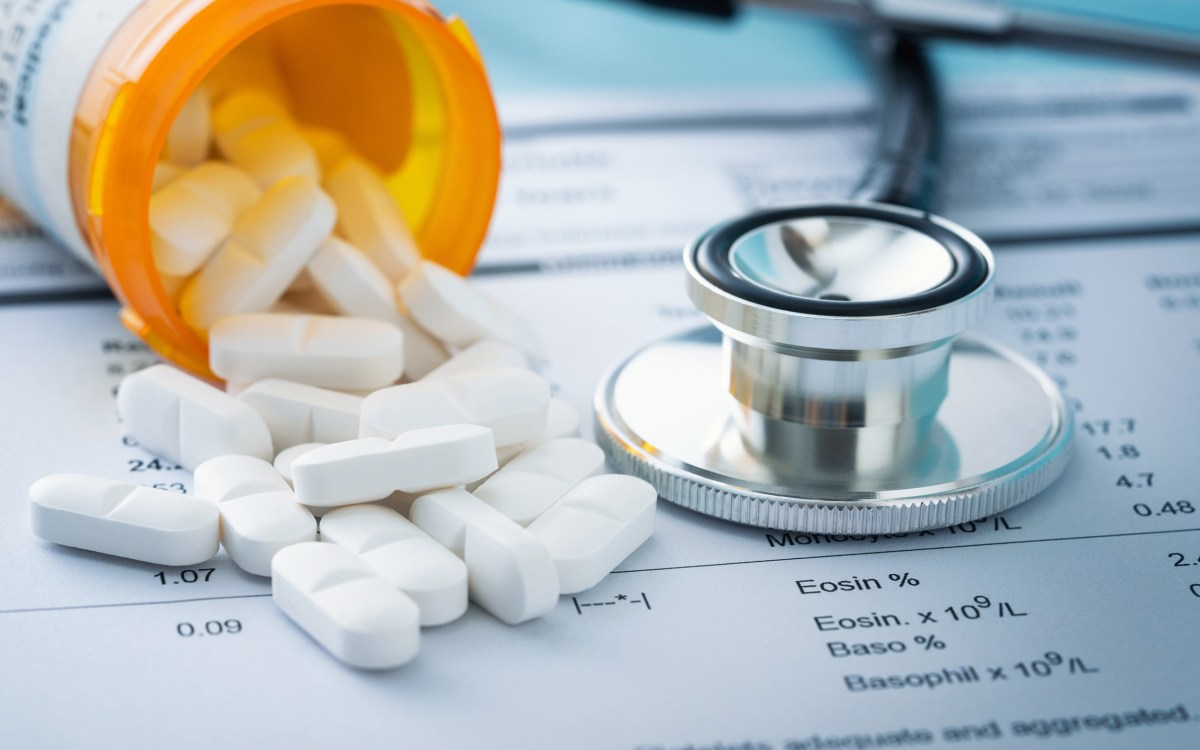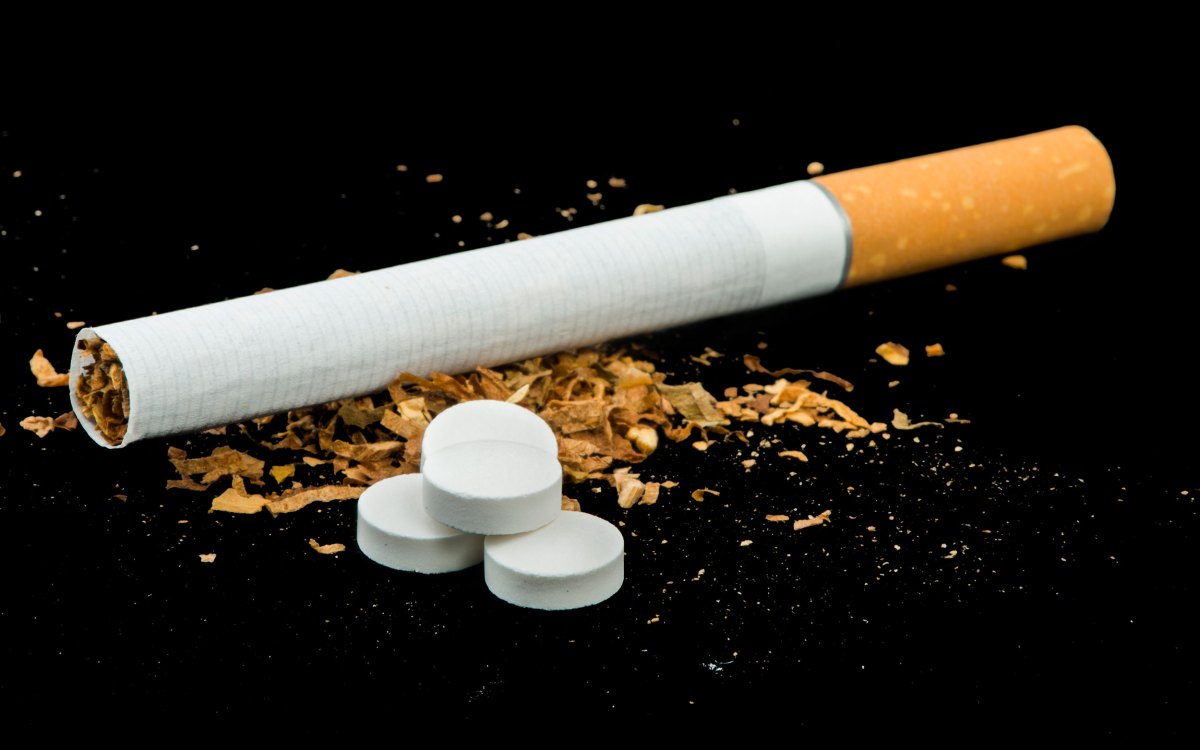
Narcan, generically known as naloxone and used to revive people who overdose on opioids, may not reverse an overdose on xylazine, an animal tranquilizer that has found its way to the streets.
Matt Rourke/AP photo
Remember opioid crisis? It’s gotten worse.
Researchers say a series of interventions appear to help with overdose deaths, but warn that they must be scaled pretty high
News of the opioid crisis no longer dominates the headlines as it did before the pandemic. However, the problem has not eased but gotten worse. A new study by a group including several Massachusetts General Hospital researchers examined a set of public health interventions that appear promising as a way to reduce overdose deaths.
Deaths involving illicit drugs and prescription opioids have risen since 2017, when the U.S. Department of Health and Human Services declared the problem a public health emergency. The number of reported overdose deaths hit 68,000 in 2020 and rose to more than 80,000 by 2021
Using simulation modeling with state and federal data, researchers projected the number of opioid overdose deaths (OODs) could decrease significantly in New York, Massachusetts, Kentucky, and Ohio if the states employed a combination of interventions, such as treatment and medications for opioid use disorder, increasing the availability of naloxone for reversing overdoses, and reducing prescription opioid misuse. The group thinks its findings are applicable to any state.
The Gazette talked to the paper’s lead author, Jagpreet Chhatwal, director of the Institute for Technology Assessment at Massachusetts General Hospital and an associate professor of radiology at Harvard Medical School, about the findings and the need to act decisively. This interview has been condensed and edited for length and clarity.
Q&A
Jagpreet Chhatwal
GAZETTE: The number of opioid overdose deaths remains high in the U.S. Why is that?
CHHATWAL: There are multiple factors that are contributing to the rise in opioid overdose deaths. One is the mental health crisis that has reached a different level after the COVID pandemic. Before the COVID pandemic, there was the opioid epidemic, but the national mental health crisis is driving more people to use illicit substances. The second factor is that people are using a combination of multiple illicit drugs, which we call polysubstance. Typically, this mixture includes fentanyl, which is highly lethal. Even a small amount of polysubstance is lethal for most people. Another factor related to this is the fact that naloxone, which is used to reverse an opioid overdose, may not work on polysubstance. Recent reports found xylazine, a tranquilizer used for sedating animals, in the illicit drug supply. If people are using xylazine, which is not made for humans, naloxone may not work to reverse an overdose, and that is also contributing to the rise in OODs.
“The main question is how we address the underlying stress and mental health crisis that drive people to use drugs. If we can start putting our attention into that segment of population, we may see a bigger impact in the long run.”
GAZETTE: What was the goal of your study?
CHHATWAL: The objective of the study was to understand what we can do at the policy level to bring down the number of opioid overdose deaths. We use simulation modeling, a tool that can help us understand different what-if scenarios. We simulated the epidemic in four states: Massachusetts, Ohio, New York, and Kentucky. We replicated historical trends in those states, including how many people have access to treatment, and the historical, underlying mortality rates.
We then started evaluating different scenarios, which included primarily three buckets of public health interventions. One bucket was the medication for opioid use disorder. We worked with this scenario: What if we increase the number of people who are on treatment, and how do we retain people for longer treatment periods? Second bucket was a different scenario: What if we increase the availability of naloxone for reversing the overdose? And third was: What if we reduce prescription opioid misuse? Those are the three kinds of interventions that we evaluated. There was also a related question that we wanted to evaluate: How long should we implement these interventions for?
The motivation for our work came from the 2019 Helping to End Addiction Long-term (HEALing) Communities Study (HCS), one of the largest implementation studies in the field of addiction by the National Institute of Health in 67 communities across Massachusetts, Ohio, New York, and Kentucky. We believe that the insights that we gained from our study are applicable to any state.
GAZETTE: What do the findings show?
CHHATWAL: The mathematical model we used predicted that overdose deaths in the next two years with interventions in place could decrease by 17-27 percent in Massachusetts, 13-17 percent in Kentucky, 15-22 percent in New York, and 15-22 percent in Ohio. This is only in two years, but if those interventions are sustained for an additional three years, the outcomes are even higher across all four states. But reaching these targets is not an easy task — states need to increase the number of people taking medication for opioid use disorder by two- to fivefold.
GAZETTE: Can you convert those percentages in actual numbers?
CHHATWAL: In actual numbers, what we’re seeing in Massachusetts is that the estimated number of averted opioid overdose deaths is 1,056 in the next two years with the combination of all those interventions, and at the end of five years it could be 2,051. In Ohio, we see that the predicted number of lives saved is 2,084 within two years, and 3,724 at the end of five years.
The message here is that the scaling of intervention must be high in order to see a substantial reduction in overdose deaths. By just taking small steps, we don’t expect the overdose deaths to be reduced substantially in the next few years.

GAZETTE: Why is it crucial to implement a mix of public health interventions to decrease the number of OODs?
CHHATWAL: I would add that it’s not simply the combination of public health interventions that is important, but also the scale of those interventions. It’s necessary to scale up all those interventions to see a substantial reduction in overdose mortality rate. We also simulated a scenario in the study to see what would happen if we scaled back those interventions, and what we found is an increase in overdose deaths. That was surprising. We thought that maybe the numbers would remain where they were, not that they were going to rise. This is an important message because it means that we cannot scale back. We cannot really take our foot off the gas pedal. If we start implementing public health interventions, we must continue at full force. That requires long-term planning and resources for treatment recovery support, harm-reduction strategies, which involves naloxone to reduce opioid overdose fatalities and opioid prescription safety.
There are interventions that we have not evaluated in this study that may also have an impact in the reduction of opioid overdose mortality. We have not evaluated prevention from misusing or using illicit drugs. We have not simulated behavioral interventions or interventions that address the underlying stress and mental health issues that contribute to the use of drugs in the first place. It is an important point because eventually, we need to find ways to stop the demand for drugs. That would solve this problem.
GAZETTE: If those interventions can help the fight against the opioid epidemic, why aren’t they being implemented?
CHHATWAL: Public health interventions are being implemented, but the scale at which they’re implemented is telling us it is not sufficient. The situation is more critical now given the pandemic. The main question is how we address the underlying stress and mental health crisis that drive people to use drugs. If we can start putting our attention into that segment of population, we may see a bigger impact in the long run.
GAZETTE: Finally, what do you hope your study leads to?
CHHATWAL: Unfortunately, the message is not very optimistic from what we see in the study. It’s more like a warning sign. It’s telling us that we must think of out-of-the box solutions to scale up the evidence-based practices to a different level than what we are thinking of at this point. Otherwise, we don’t expect to see a reduction in opioid overdose deaths. Small, incremental steps will not do the job.
We’re in the middle of a public health emergency. It’s time to act, and the scale of those efforts must be at a much higher level than what we have seen so far.







